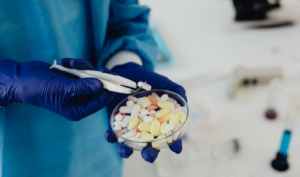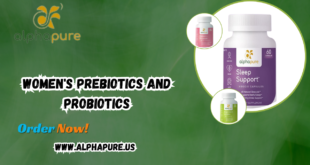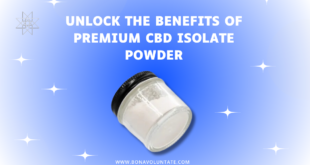Introduction
In the world of pharmaceuticals, medical devices, food production, and cosmetics, achieving FDA (Food and Drug Administration) certification is not just a milestone—it’s a fundamental step toward ensuring product safety, efficacy, and public trust. The FDA certification process is a rigorous journey that ensures products meet stringent quality standards before they reach the market. Whether you are a seasoned professional or a newcomer to the industry, understanding the ins and outs of FDA certification is essential for success.
What is FDA Certification?
FDA certification is a process by which the U.S. Food and Drug Administration assesses and approves products, facilities, or systems to ensure they meet specific regulatory standards. These standards are designed to protect public health by ensuring that products are safe, effective, and of high quality. The certification process varies depending on the product type, but it typically involves thorough testing, documentation, inspections, and ongoing compliance monitoring.
Why is FDA Certification Important?
- Consumer Trust: FDA certification serves as a seal of approval that consumers recognize and trust. It signifies that a product has been rigorously tested and meets the highest standards of safety and quality.
- Market Access: Many retailers, distributors, and international markets require FDA certification as a prerequisite for doing business. Without it, your product may not have access to key markets.
- Legal Compliance: FDA certification ensures that your product complies with federal regulations. Non-compliance can result in fines, product recalls, or even legal action.
- Competitive Advantage: Achieving FDA certification can set your product apart from competitors, providing a unique selling point that can enhance marketability.
The FDA Certification Process
The FDA certification process can be complex, with multiple steps and requirements depending on the type of product being certified. Here’s a breakdown of the key stages:
- Determine the Regulatory Pathway
Before starting the certification process, it’s essential to determine the appropriate regulatory pathway for your product. The FDA categorizes products into different classes, each with its own set of requirements:
- Class I: Low-risk products (e.g., bandages, manual toothbrushes) that typically require general controls and may not need premarket approval.
- Class II: Moderate-risk products (e.g., infusion pumps, powered wheelchairs) that usually require premarket notification (510(k)) to demonstrate substantial equivalence to a legally marketed device.
- Class III: High-risk products (e.g., implantable pacemakers, artificial hearts) that require premarket approval (PMA) and extensive clinical testing.
- Conduct Pre-Clinical and Clinical Testing
Depending on the product, pre-clinical and clinical testing may be necessary to gather data on safety and efficacy. This stage involves laboratory research, animal testing, and human clinical trials. For drugs and biologics, this process is particularly rigorous, with multiple phases of clinical trials required before approval.
- Prepare and Submit Documentation
Documentation is a critical component of the FDA certification process. This includes:
- Product Description: Detailed information about the product, including its intended use, design, and materials.
- Testing Data: Results from pre-clinical and clinical tests that demonstrate safety and efficacy.
- Manufacturing Information: Details about the manufacturing process, including quality control measures and facility certifications.
- Labeling and Packaging: Information about product labeling, instructions for use, and packaging materials.
- Risk Management: An assessment of potential risks associated with the product and how they are mitigated.
The documentation is submitted to the FDA for review, and any deficiencies must be addressed before approval is granted.
- FDA Review and Inspection
Once the documentation is submitted, the FDA conducts a thorough review to assess compliance with regulatory standards. This may involve:
- Scientific Review: FDA experts review the testing data, risk assessments, and other documentation to ensure the product meets safety and efficacy requirements.
- Manufacturing Facility Inspection: The FDA may conduct an on-site inspection of the manufacturing facility to verify compliance with Good Manufacturing Practices (GMP).
- Labeling Review: The FDA reviews the product labeling to ensure it provides accurate and adequate information for consumers and healthcare providers.
- Post-Market Surveillance
After FDA certification is granted and the product is on the market, ongoing compliance is required. The FDA monitors products through post-market surveillance, which may include:
- Adverse Event Reporting: Manufacturers are required to report any adverse events or side effects associated with the product.
- Periodic Inspections: The FDA may conduct periodic inspections of manufacturing facilities to ensure continued compliance with regulatory standards.
- Recalls and Corrective Actions: If safety issues arise, the FDA may require recalls, product modifications, or other corrective actions.
Tips for a Successful FDA Certification
- Start Early: The FDA certification process can be time-consuming, so it’s essential to start early and plan for potential delays. Developing a clear timeline and assigning responsibilities can help keep the process on track.
- Engage Experts: FDA regulations can be complex and challenging to navigate. Engaging experts, such as regulatory consultants or legal advisors, can help ensure that your documentation is accurate and complete.
- Maintain Clear Communication: Regular communication with the FDA during the certification process can help address issues quickly and keep the process moving forward. Establishing a single point of contact within your organization can streamline communication.
- Focus on Quality: Quality is at the heart of FDA certification. Ensuring that your product, manufacturing processes, and documentation meet the highest standards is crucial for success.
- Be Prepared for Inspections: FDA inspections can be rigorous, so it’s essential to be prepared. This includes training staff, maintaining thorough records, and conducting internal audits to identify and address potential issues.
As you embark on the journey toward FDA certification, remember that continuous improvement is key. Regularly reviewing and updating your processes, staying informed about regulatory changes, and fostering a culture of quality within your organization will ensure long-term success. Additionally, consider leveraging technology, such as digital tools for documentation and compliance tracking, to streamline the certification process. Building strong relationships with regulatory bodies and industry peers can also provide valuable insights and support. With diligence, attention to detail, and a proactive approach, your path to FDA certification can lead to lasting success and a strong market presence.
Conclusion
Achieving FDA certification is a significant accomplishment that opens doors to new markets and builds consumer trust. While the process can be complex and demanding, the rewards are well worth the effort. By understanding the regulatory requirements, preparing thoroughly, and maintaining a commitment to quality, you can successfully navigate the FDA certification process and unlock success for your product.
 Personal Finance and Attractive Interest Rates Unlock Smart Savings with Low Rates and Expert Financial Tips
Personal Finance and Attractive Interest Rates Unlock Smart Savings with Low Rates and Expert Financial Tips







